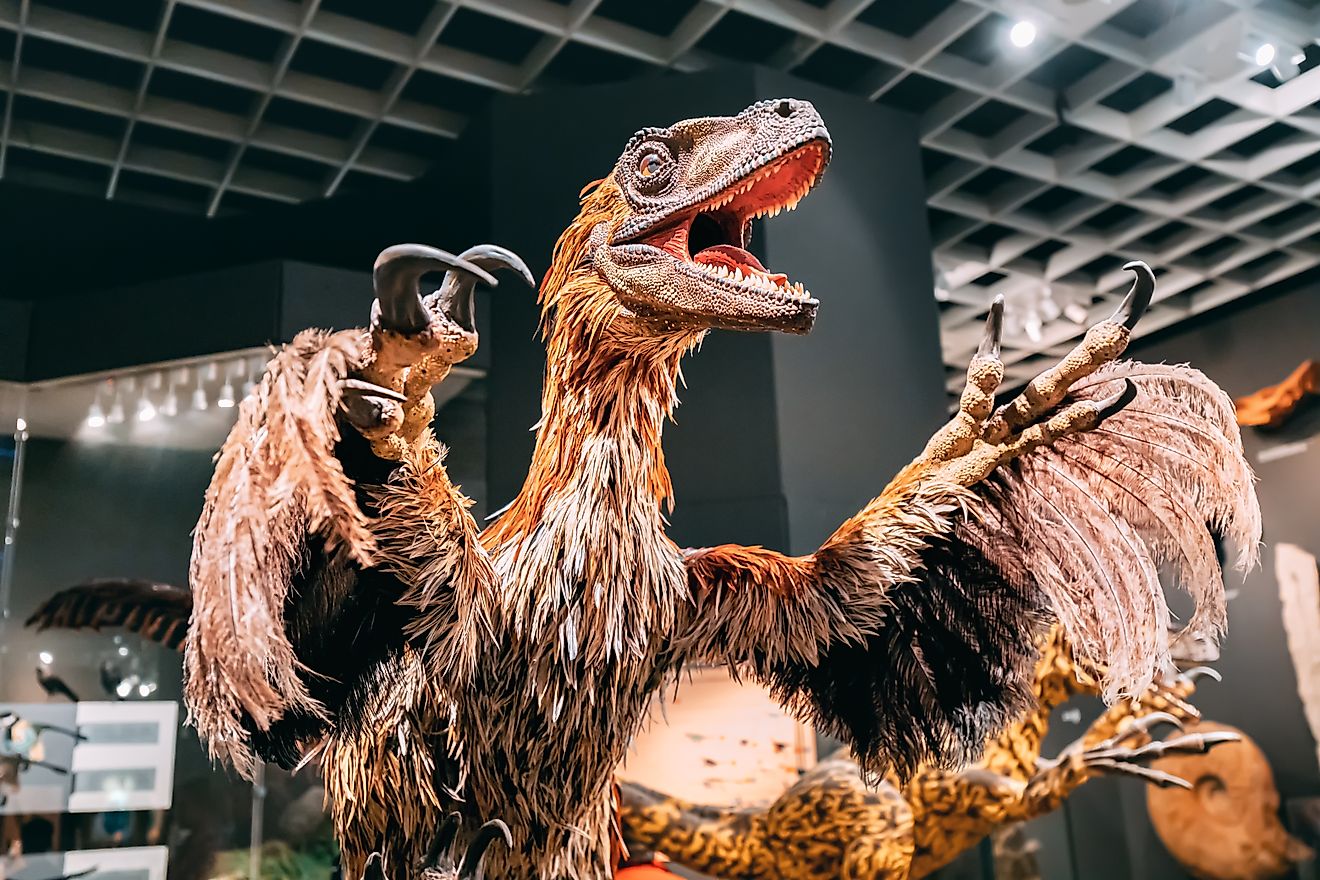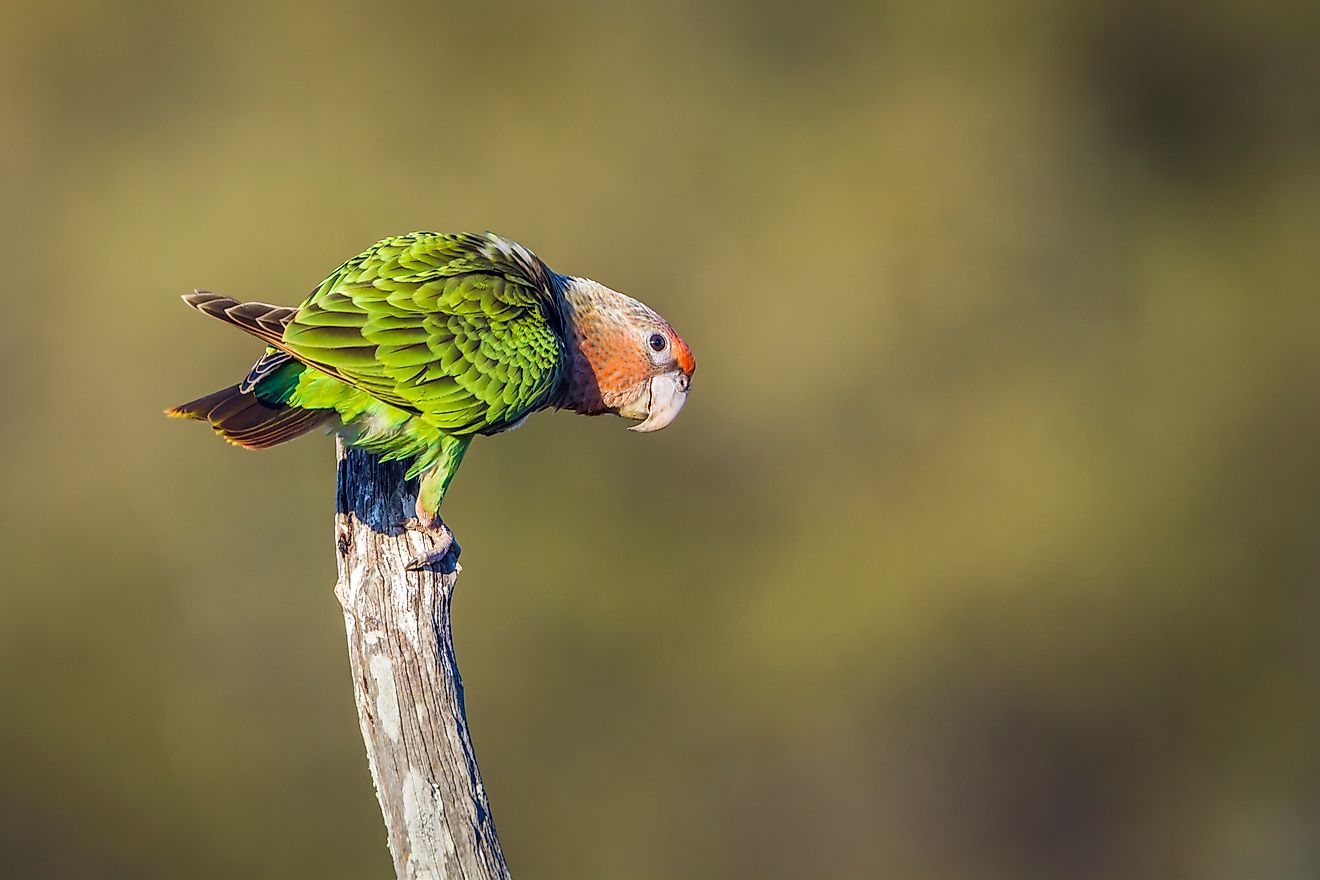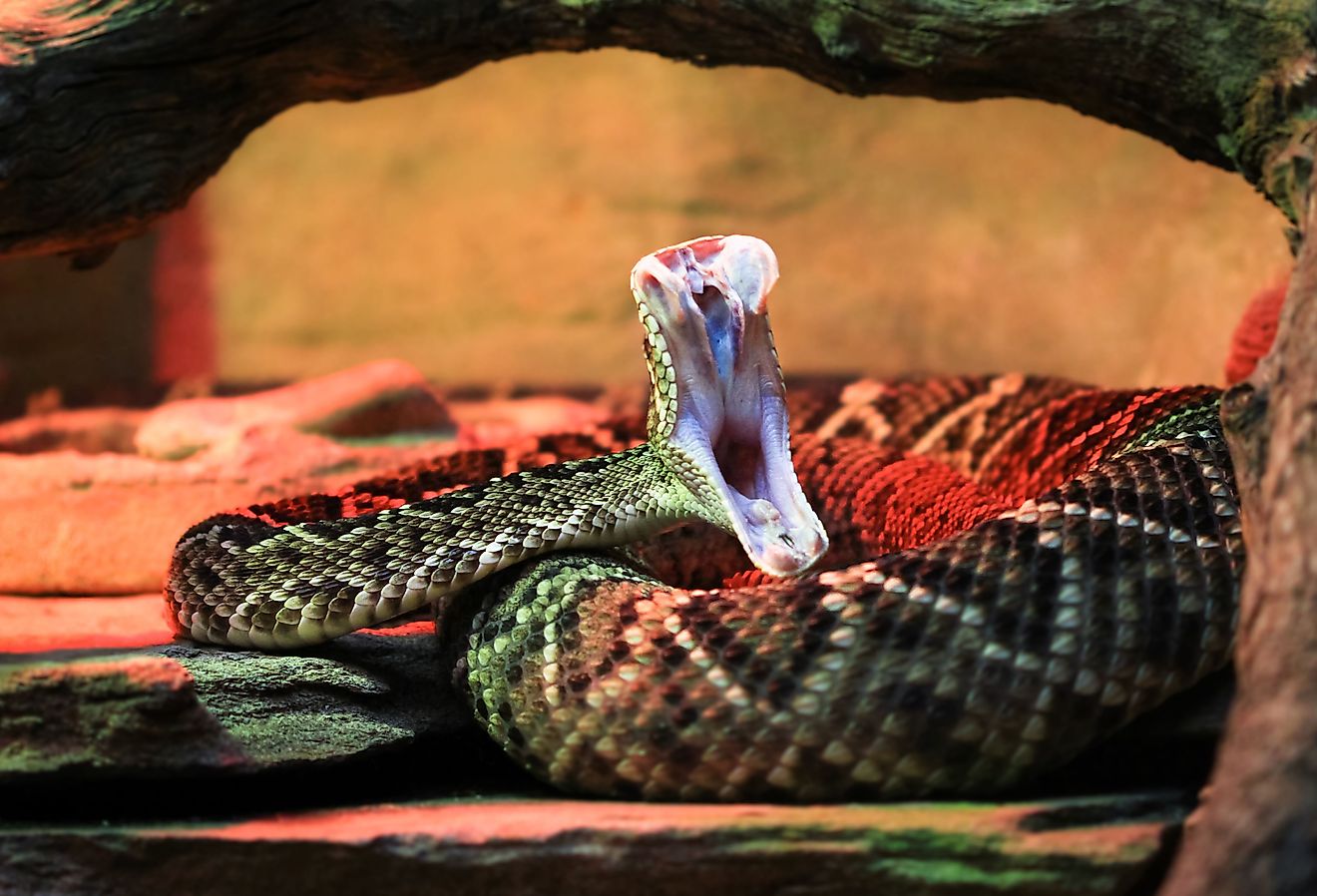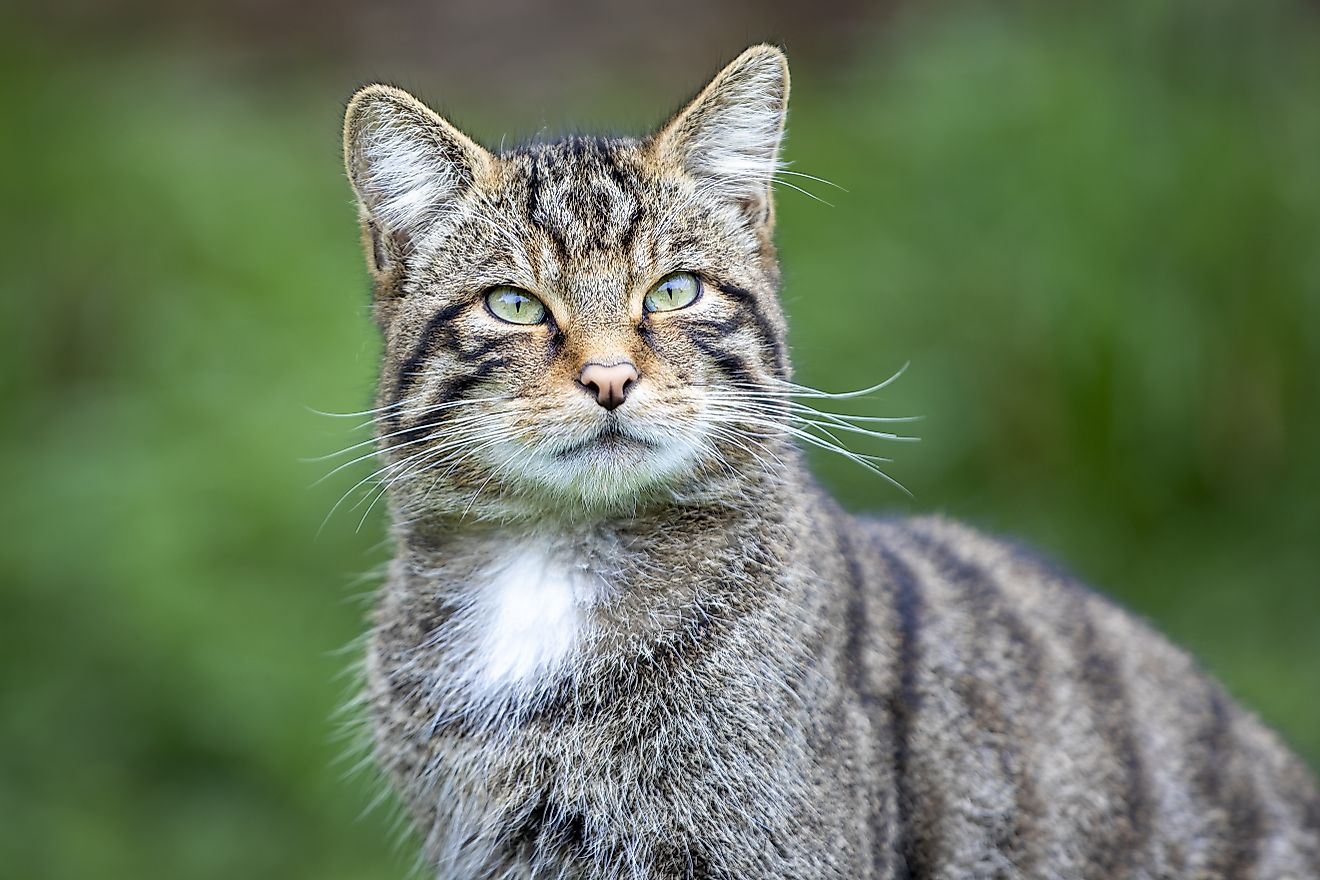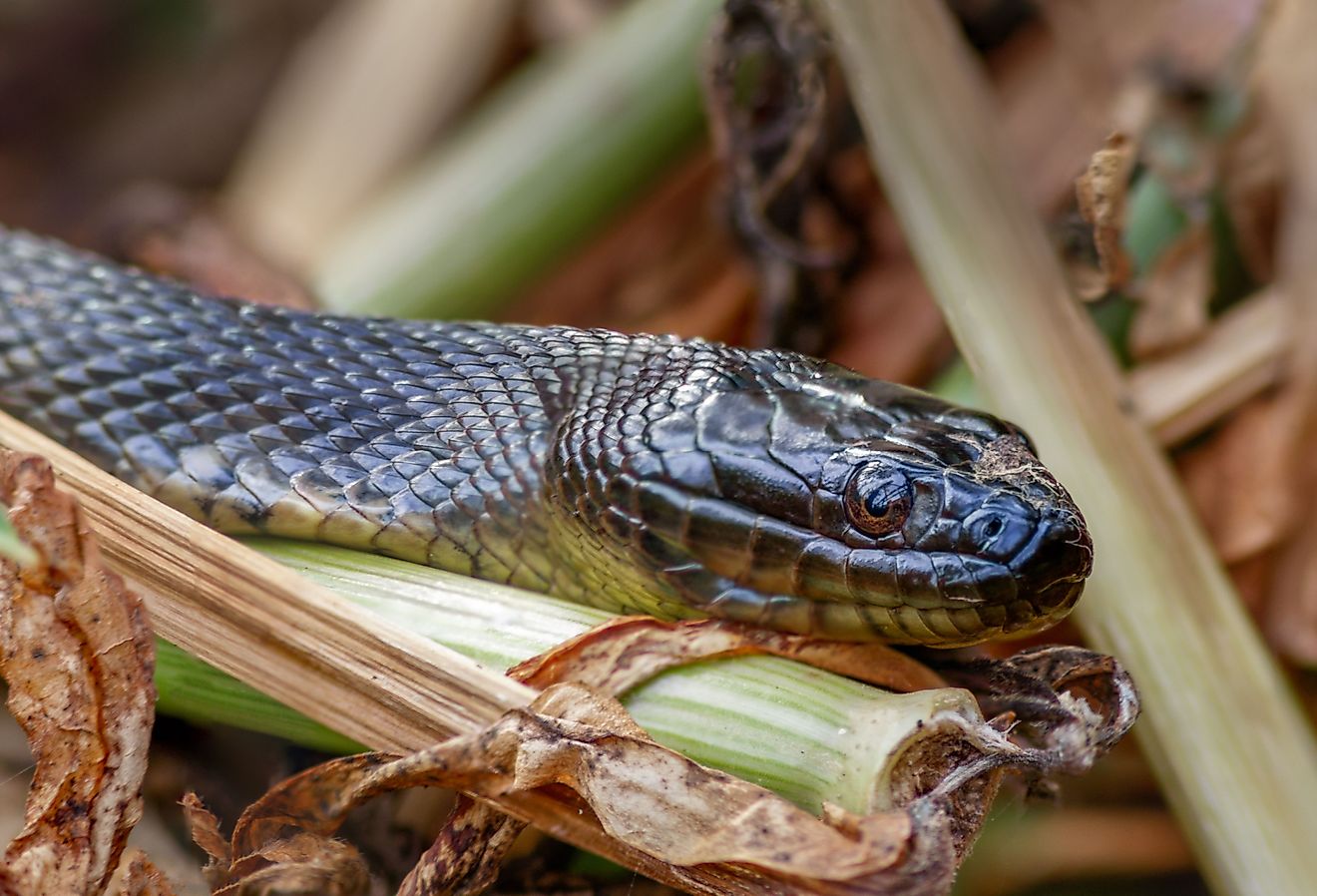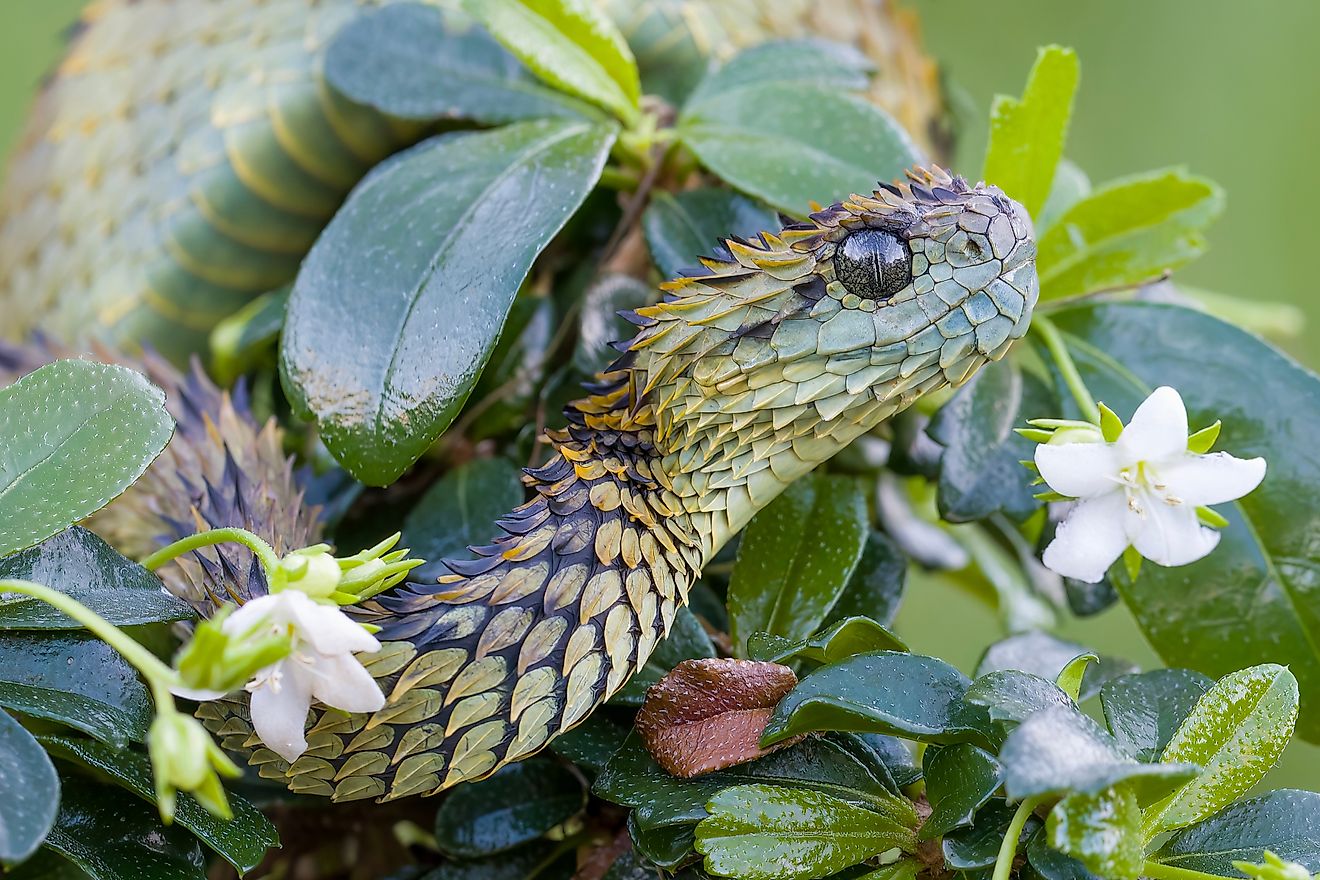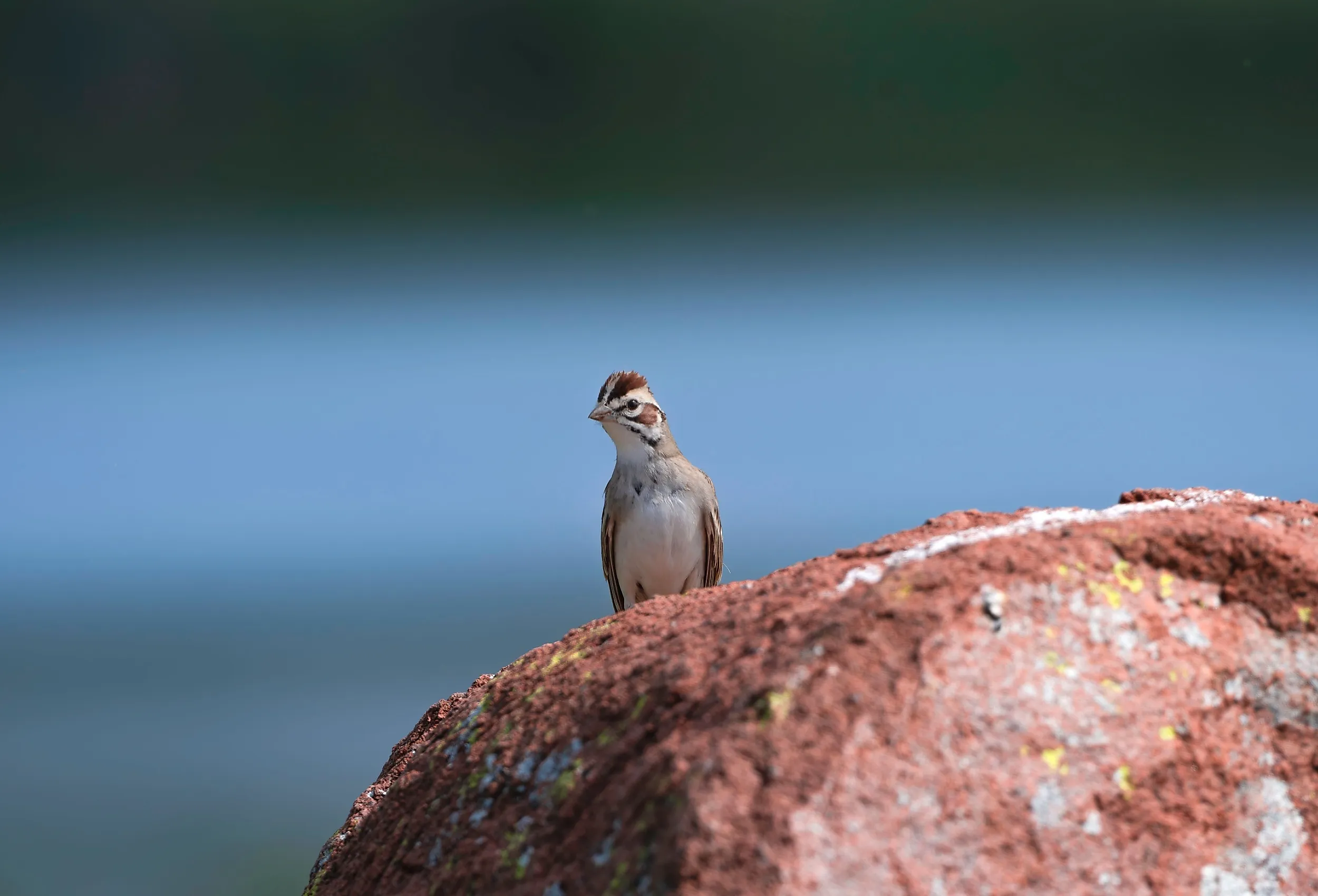
5 Endangered Animals Fighting For Survival In Ohio
Ohio’s wetlands, prairies, forests, and rivers are home to diverse wildlife and rich biodiversity. In these habitats, however, some species are faring better than others. Ohio’s first official list of endangered wildlife was released in 1974 and contained 71 species. The list is updated every five years and its most recent version includes over 100 species of threatened flora and fauna.
Below are some of the endangered animals that Ohio conservationists are safeguarding as they struggle to revive native populations. The classification ‘endangered’ is defined as animals threatened with extirpation from the state, meaning they are in danger of being entirely eradicated from Ohio. From tiny rodents to large predators, and from reclusive reptiles to striking songbirds, these special creatures are battling for their lives in the face of development, pollution, habitat loss, and other threats.
Allegheny Woodrat
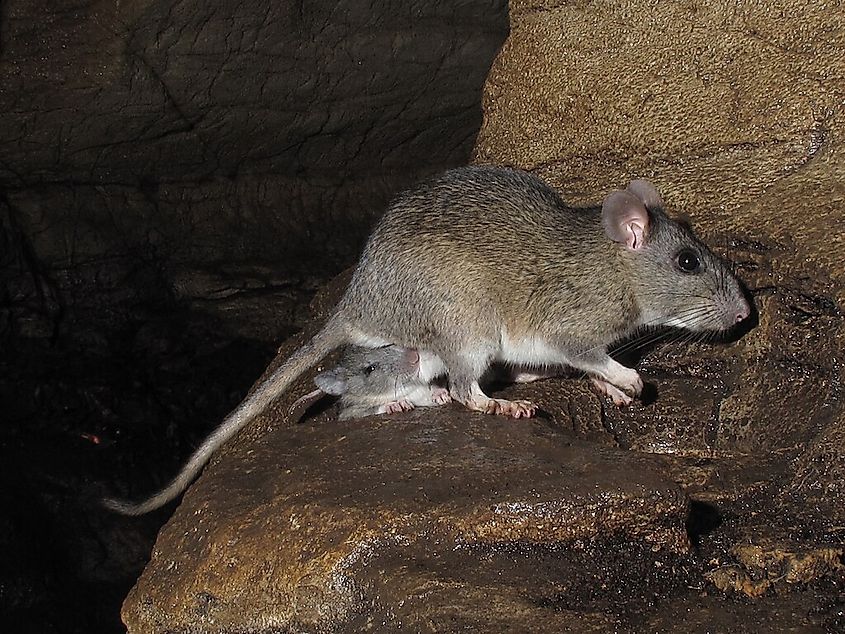
The small Allegheny Woodrat has been endangered in Ohio since 1974, and its population continues to decline. It’s now only found in the southern part of the state, within the Edge of Appalachia Preserve, where it lives in rocky terrain near mountains and cliffs.
The rats are declining for several reasons. They feed on seeds picked out from raccoon poop, but often pick up roundworms too, and the parasite usually kills them. Two more nasty pests, the spongy moth and chestnut blight, have ravaged oak and chestnut trees, both vital food sources for the woodrat. Being about the same size as squirrels, woodrats are also preyed upon by many other species, including owls, foxes, skunks, and weasels.
Given their perilous status in Ohio, Allegheny Woodrats are a key area of focus for many conservation groups. The Nature Conservancy manages the Edge of Appalachia Preserve and has been monitoring populations in the area. Together with the Cincinnati Museum Center, the group is tagging and testing the rodents to learn more about them. One key discovery showed that the Ohio woodrats are genetically inbred, which is contributing to their low reproduction. To widen the gene pool and encourage breeding, the Ohio Division of Wildlife is working to bring in populations from other states where the animals are not as vulnerable.
Green Salamander
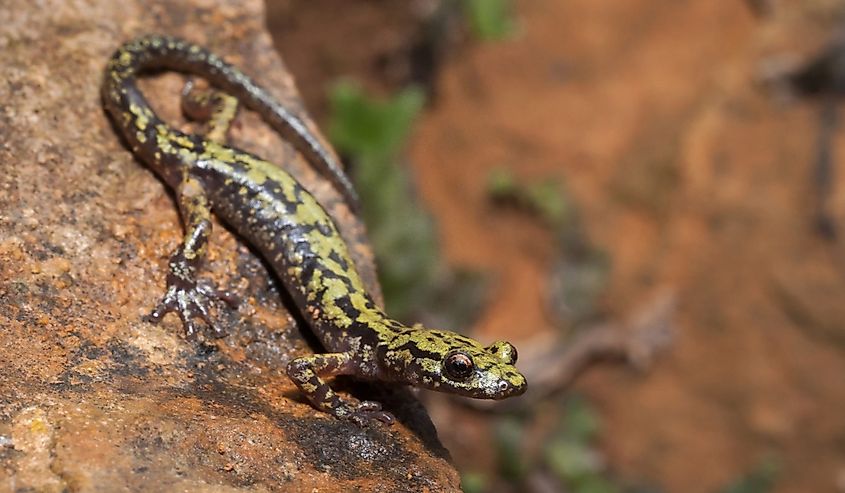
Measuring just 3-5 inches long and a master of camouflage, the tiny Green Salamander is easy to miss, especially in Ohio, where it's in decline. The lizard is found in the state's southeastern part, near the Ohio River, where it hangs out in rocky outcrops, cliffs, and forested areas.
The biggest threat to the salamander is habitat loss due to logging activity and urban development. Pollution is also a factor. Being a lungless lizard, the animal breathes through its skin, which makes it particularly sensitive to environmental hazards.
Since the Green Salamander is highly habitat-specific, conservation efforts have focused mainly on protecting habitats. The Nature Conservancy recently added over 200 acres to the Edge of Appalachia Preserve to protect the high elevation rocks and shady forested areas they love.
The Salamander Run Metropark in Butler County is also an important protected habitat created by the Three Valley Conservation Trust. This 125-acre preserve encompasses wetlands, woodlands, and prairie and contains several nature trails. The park regularly hosts events designed to raise awareness of salamanders and the threats to their survival.
Black Bear
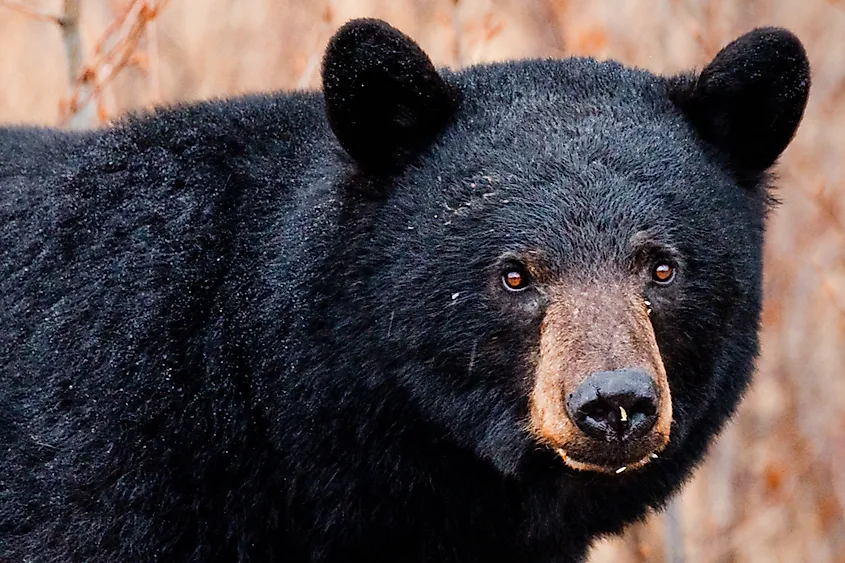
Although common in many parts of the United States, Black Bears haven’t had an easy time in Ohio. Once they roamed the state in healthy numbers, however, hunting, deforestation, and trapping meant that by the 1850s, they were considered eradicated from Ohio. There were infrequent sightings, however, and the bears are now believed to have made a limited comeback in central and southeastern Ohio.
Black Bears typically prefer wooded areas with plenty of cover, but they have a large range and will roam to find food. The Ohio Division of Wildlife has been tracking bears since 1993 and reported 285 sightings in 2022. Conservationists estimate that most of these are young male bears travelling from Pennsylvania or West Virginia. Adult female sightings are much rarer and have only been recorded in northeast Ohio, near the Pennsylvania border.
To better understand bear movements in Ohio, the Ohio Department of Natural Resources (ODNR) Division of Wildlife has teamed up with the University of Dayton’s Gantchoff Lab to collar and track 10-20 bears. Monitoring their whereabouts with a GPS device allows researchers to learn more about their habits, habitats, and human interactions.
Timber Rattlesnake
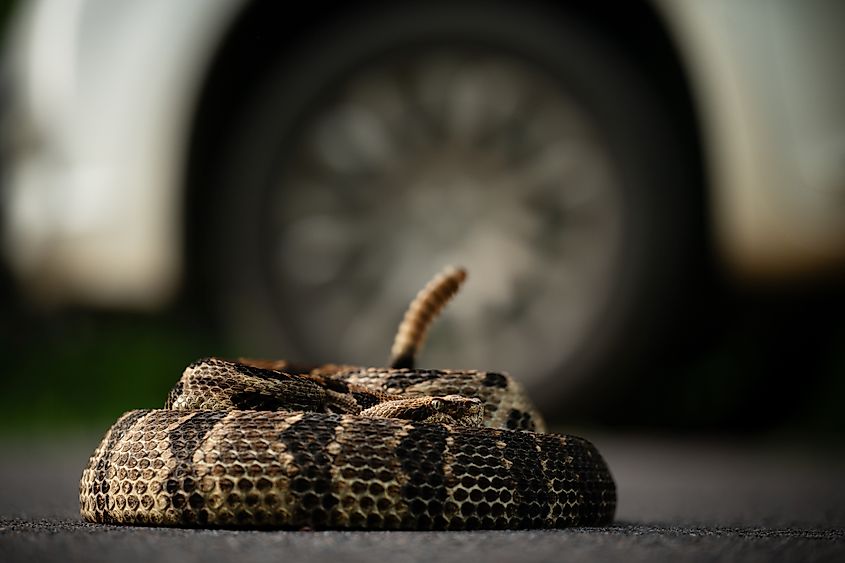
One of only three venomous snakes in Ohio, the Timber Rattlesnake is 3-4 ft long with distinctive dark bands and a telltale rattle at the end of its tail. You can also identify these pit vipers from their triangular-shaped heads. These rattlesnakes are endangered in Ohio primarily due to widespread habitat loss. Previously found across 25 counties, they are now limited to just eight in southern Ohio. It doesn’t help that rattlesnakes are slow to reproduce. Females begin breeding at six years old and then have a four-year gap before producing more young. There are typically ten hatchlings per litter, but only two or three survive to adulthood.
The snake’s preferred habitat is mature forest, upland forested areas with rugged outcrops and plenty of logs, rocks, and leaf litter to shelter under. The Edge of Appalachia Preserve is a key conservation area for the rattlesnake, and the Nature Conservancy has been placing cameras at their den sites to monitor resident populations and discover where they spend their winters. The Ohio Biodiversity Conservation Partnership is also focusing on the reclusive reptile in its Timber Rattlesnake Distribution Project, which tracks the snake to learn its patterns and therefore create more effective forest management plans.
Lark Sparrow
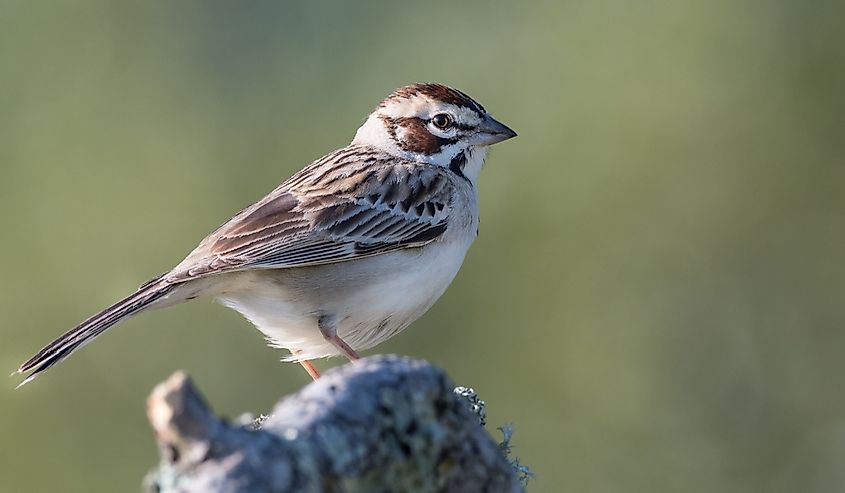
The beautiful Lark Sparrow has a very noticeable harlequin pattern on its face and white spots on its tail. Unlike other birds, they prefer to walk when foraging rather than hopping along the ground. The sparrow is migratory and only spends spring and summer in Ohio, stopping in the state to raise their young before travelling on to Mexico.
Lark Sparrows make their nests close to the ground and prefer open grassland. They are endangered in Ohio because their habitats are being destroyed. Conservation efforts are focusing on protecting areas where they can nest, including the Oak Openings region in northwest Ohio, where the Black Swamp Bird Observatory (BSBO) is collecting data on how the birds use their habitats. The Nature Conservancy’s Kitty Todd Preserve, a 1,400-acre area of oak savanna, is another important site for Lark Sparrows.
Both the BSBO and TNC are members of the Green Ribbon Initiative, spearheaded by the Ohio Department of Natural Resources. The project aims to raise awareness among land owners and other partners of the importance of protecting rare ecosystems like those that support the Lark Sparrow.
Endangered Species Dos and Don’ts
When an animal is listed as Endangered in Ohio, it is protected under state law, meaning it cannot be hunted or harmed. Violations can incur fines or jail time. Be mindful of the local wildlife if you’re visiting the state and spending time in its wilderness areas, parks, and preserves. Keep pets leashed, stay on marked trails, and never leave anything behind.
If you are lucky enough to catch a glimpse of any of the above species, report the sighting to the Ohio Department of Natural Resources’ Wildlife Reporting System. This helps biologists get a better picture of population distributions and furthers conservation efforts. Next time you’re out enjoying the beautiful Ohio scenery, keep your eyes peeled and don’t miss the opportunity to become a citizen scientist, working to protect the state’s rarest animals.



